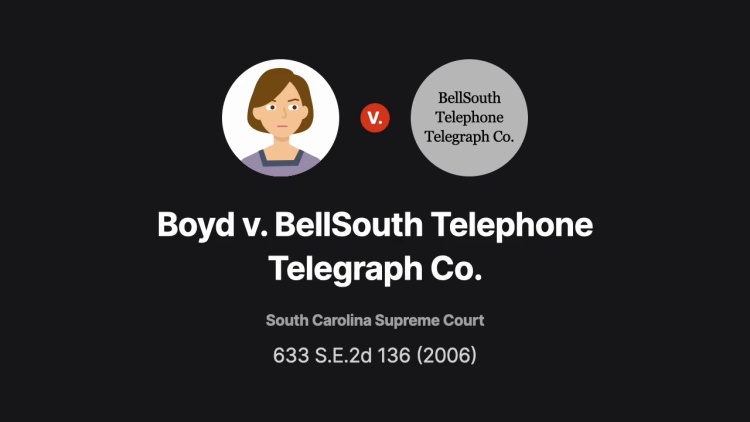Boyd v. BellSouth Telephone Telegraph Co.
South Carolina Supreme Court
633 S.E.2d 136 (2006)
- Written by Rose VanHofwegen, JD
Facts
BellSouth Telephone Telegraph Co., Inc. (BellSouth) (defendant) owned property in Denmark, South Carolina, with public streets on three sides and a three-story building. BellSouth built a driveway from the double doors at the back of the building to the street behind it. In 1988, BellSouth divided the property and sold the front parcel with the building to the city. The city sold the property to John Boyd, who conveyed it to his wife, Caroline Boyd (plaintiff), to use for an antique store. Part of the Boyds’ decision to purchase the property was based on having driveway access for deliveries, as large items could be delivered directly to the basement using the rear doors. The interior stairways and hallways were too narrow to bring large items into the basement from the front doors. Caroline used the driveway for deliveries for years. But after 9/11, BellSouth installed a fence to increase security, cutting off the driveway access. Caroline sued BellSouth claiming she had an easement by necessity, by prior use, or on equitable-estoppel grounds. The evidence showed building an alternate driveway would be impractical and too expensive. A special referee granted summary judgment for BellSouth, but the appellate court partially reversed, reasoning a factual question remained as to the necessity of an easement by prior use. However, the appellate court also found the strict necessity required for an easement by necessity lacking. BellSouth appealed.
Rule of Law
Issue
Holding and Reasoning (Burnett, J.)
What to do next…
Here's why 899,000 law students have relied on our case briefs:
- Written by law professors and practitioners, not other law students. 47,000 briefs, keyed to 994 casebooks. Top-notch customer support.
- The right amount of information, includes the facts, issues, rule of law, holding and reasoning, and any concurrences and dissents.
- Access in your classes, works on your mobile and tablet. Massive library of related video lessons and high quality multiple-choice questions.
- Easy to use, uniform format for every case brief. Written in plain English, not in legalese. Our briefs summarize and simplify; they don’t just repeat the court’s language.





